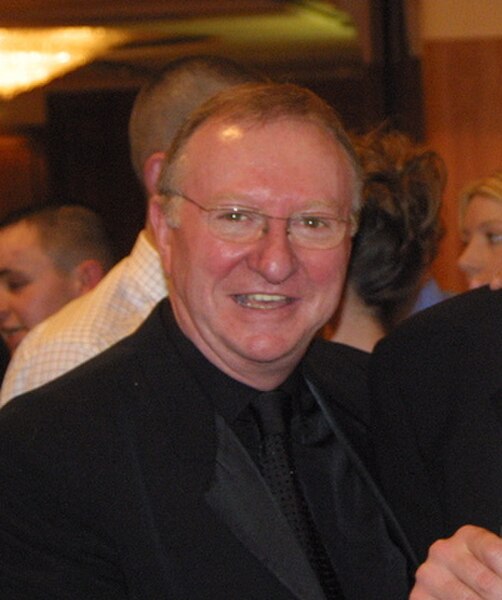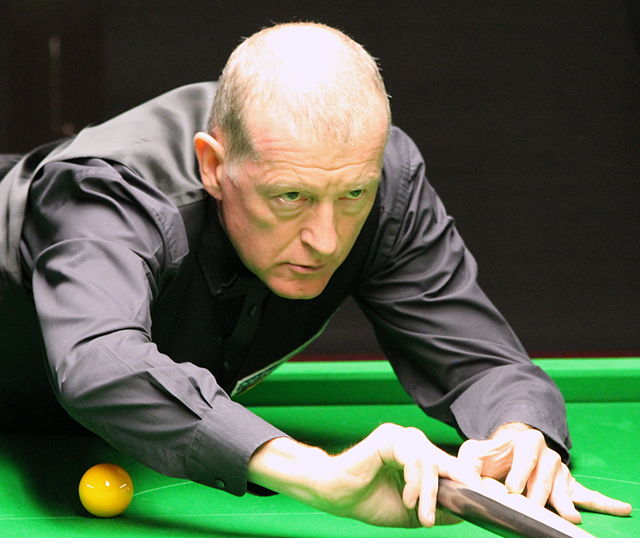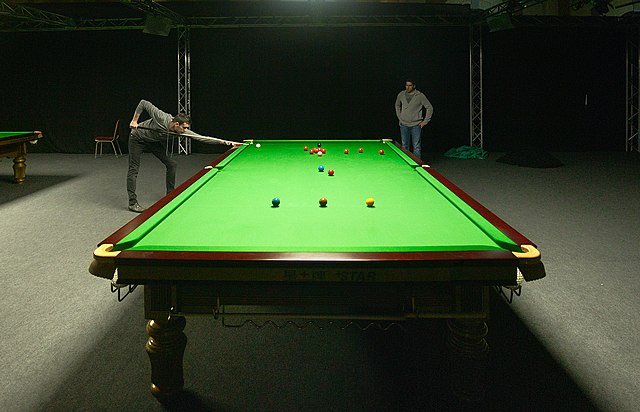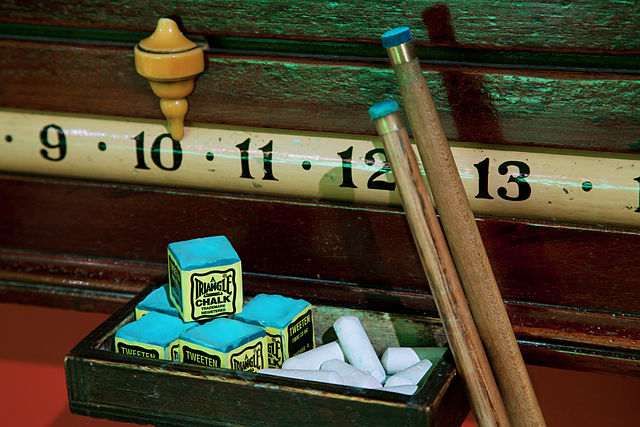1984 World Snooker Championship
The 1984 World Snooker Championship was a ranking professional snooker tournament that took place between 21 April and 7 May 1984 at the Crucible Theatre in Sheffield, England. The event was organised by the World Professional Billiards and Snooker Association, and was the eighth consecutive World Snooker Championship to be held at the Crucible since the 1977 event. The event featured 94 participants, of which 78 players competed in a qualifying event held at the Redwood Lodge in Bristol from 1 to 13 April. Of these, 16 players qualified for the main stage in Sheffield, where they met 16 invited seeds. The total prize fund for the event was £200,000, the highest total pool for any snooker tournament at that time; the winner received £44,000.
Dennis Taylor (pictured in 2004) defeated Doug Mountjoy 13–8 in the quarter-finals.
Steve Davis (pictured in 2012) defeated Jimmy White 18–16 in the final, retaining the title and winning his third world championship.
Snooker is a cue sport played on a rectangular billiards table covered with a green cloth called baize, with six pockets, one at each corner and one in the middle of each long side. First played by British Army officers stationed in India in the second half of the 19th century, the game is played with twenty-two balls, comprising a white cue ball, fifteen red balls, and six other balls—a yellow, green, brown, blue, pink, and black—collectively called the colours. Using a cue stick, the individual players or teams take turns to strike the cue ball to pot other balls in a predefined sequence, accumulating points for each successful pot and for each time the opposing player or team commits a foul. An individual frame of snooker is won by the player who has scored the most points. A snooker match ends when a player reaches a predetermined number of frames.
Four-time world champion Mark Selby playing at a practice table during the 2012 Masters tournament
A full-size snooker table set up for the start of a game
A sliding scoreboard, some blocks of cue-tip chalk, white chalk-board chalk, and two cue sticks
A shot using a rest, allowing the player to reach farther down the table






